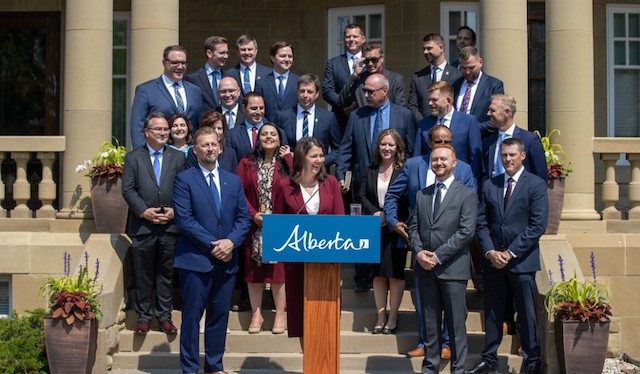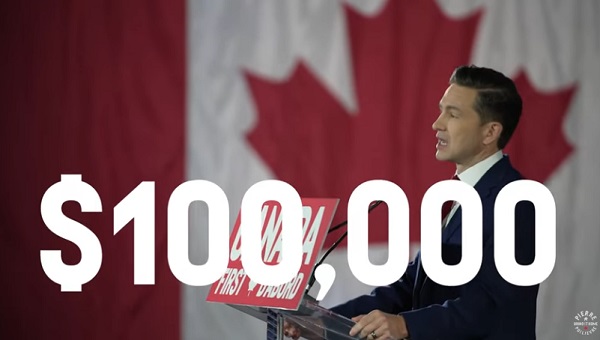Alberta
Ministerial Mandate Letters highlight upcoming showdowns between Alberta and Ottawa

Contributed by Free Alberta Strategy
After every election in Alberta, once the new government is formed and Cabinet has been selected, the Premier provides documents called mandate letters to each of their new Cabinet Ministers. These mandate letters outline the government’s priorities and policy objectives, as well as the Premier’s expectations, for each Minister’s performance in their respective roles. It is also common for these mandate letters to be released publicly, giving us as the public an early look at where the government is likely headed in the coming months and years. Over the last few days, the first of these mandate letters have been released, so we wanted to bring you a few of the highlights.
The constant theme throughout the letters is a very clear message to the federal government that Alberta will be flexing its muscles on the national stage in the coming four years. In particular, the two highest-profile Ministries – namely Finance and Energy – got mandate letters that put the federal government right in their crosshairs.
*****
Drumheller-Stettler MLA Nate Horner is in Cabinet as Finance Minister and has been tasked with looking at the establishment of an Alberta Revenue Agency and an Alberta Pension Plan.
These are both fundamental concepts of the Free Alberta Strategy, and both are strongly opposed by the New Democrats led by Rachel Notley.
The concept of an Alberta Revenue Agency isn’t as scary as most of the opposition is making it out to be.
Quebec already has a Quebec Revenue Agency that collects all provincial tax.
Saskatchewan just passed the Saskatchewan Revenue Agency Act, which gives them the ability to defend Saskatchewan’s economic autonomy, industries and jobs from federal intrusion and constitutional overreach.
Also, Alberta already collects provincial corporate tax through the Tax and Revenue Administration department.
So, in some ways, the Alberta Revenue Agency already exists – we just need to expand its mandate to include other types of taxes other than corporate tax.
This move would also provide greater flexibility for the province when it comes to provincial tax collection policy.
As a bonus, once this is done, we will then be able to join Quebec in lobbying the federal government for the ability of provinces to collect federal taxes.
This is something that Quebec has been pushing for for quite some time, and while they haven’t made any progress in convincing the current federal Liberal Party, several recent Conservative Party leaders have expressed support for the idea.
With regards to an Alberta Pension Plan, there is an actuarial report due to be released sometime soon that has studied this issue.
“It’s something that’s been outlined as a potential opportunity and something that we need to really flesh out and get into the numbers and make sure that Albertans understand,” said Horner.
We’ve pointed out here a few times that Albertans contribute more into the Canada Pension Plan than we take out in benefits.
In essence, Ottawa is using the CPP as just one more way to subsidize the rest of Canada with our money.
We anticipate the report – when it is released – will point out that due to our young demographics and provincial income levels, an Alberta Pension Plan will give us the ability to decrease contributions while maintaining the same benefits to our seniors, keep contribution levels the same while increasing benefits to our seniors, or some combination of the two.
Alberta’s exit from the Canada Pension Plan would also leave a huge hole in the national fund – one that would require premiums to dramatically increase in the rest of the country to make up for the subsidy they’ll no longer be getting from Albertans.
*****
Fort McMurray-Lac La Biche MLA Brian Jean steps into the crucial role of Energy and Minerals, a very fitting role given the riding he represents is the very heartland of the energy industry.
Jean will face off against a federal government that has been violating provincial natural resource jurisdiction ever since its election, and he will be expected to stand up to the politicians in Ottawa who are seeking to systematically decimate our natural resource industry.
Specifically, Jean is tasked with “defending Alberta’s energy interests against federal overreach and developing strategic alliances with other provinces to deal with energy-related issues.”
Recently, Federal Environment Minister Steven Guilbeault has gone so far as to state his belief that oil and gas production is likely to be reduced by 75% by 2050.
And given Justin Trudeau’s plans for a Just Transition / Sustainable Jobs Act, a net-zero electricity grid by 2035, an emissions / production cap on oil and gas at the end of this year, and more, we should believe him when he says he intends to try.
Considering the impact the aggressive climate ambitions of the federal government are anticipated to have on the national economy, prioritizing the defence of the industry on a jurisdictional basis is absolutely essential to ensure the future of Alberta.
*****
Horner, Jean, and the rest of Cabinet are about to become willing participants in the biggest fight of their political lives.
They will be expected to stand up for Alberta against the next wave of federal attacks and wrest control of our future back from Ottawa.
Here at the Free Alberta Strategy, we will be pushing the government to stay resolute in the face of these attacks, and to implement our ideas and proposals.
We’ve seen once before that a government in Alberta can be elected on a strong mandate to stand up to the federal government but back off when left-wing activists and media pressure them to stop.
That’s why we need to keep the pressure on to keep going, and make sure this government follows through.
To help us keep the pressure on, please consider making a donation to the Free Alberta Strategy:
We need your support to continue our research, policy analysis, grassroots organizing, and communications efforts.
Thanks for your support!
Regards,
The Free Alberta Strategy Team
—
DONATE has two key objectives:
- Establishing complete Provincial Legislative Sovereignty within Canada
- Ending Equalization and Net Federal Transfers out of Alberta
The Strategy accomplishes these two objectives through a series of legislative and other policies that must be implemented by Alberta’s Provincial Government
Alberta
Alberta takes big step towards shorter wait times and higher quality health care

From the Fraser Institute
On Monday, the Smith government announced that beginning next year it will change the way it funds surgeries in Alberta. This is a big step towards unlocking the ability of Alberta’s health-care system to provide more, better and faster services for the same or possibly fewer dollars.
To understand the significance of this change, you must understand the consequences of the current (and outdated) approach.
Currently, the Alberta government pays a lump sum of money to hospitals each year. Consequently, hospitals perceive patients as a drain on their budgets. From the hospital’s perspective, there’s little financial incentive to serve more patients, operate more efficiently and provide superior quality services.
Consider what would happen if your local grocery store received a giant bag of money each year to feed people. The number of items would quickly decline to whatever was most convenient for the store to provide. (Have a favourite cereal? Too bad.) Store hours would become less convenient for customers, alongside a general decline in overall service. This type of grocery store, like an Alberta hospital, is actually financially better off (that is, it saves money) if you go elsewhere.
The Smith government plans to flip this entire system on its head, to the benefit of patients and taxpayers. Instead of handing out bags of money each year to providers, the new system—known as “activity-based funding”—will pay health-care providers for each patient they treat, based on the patient’s particular condition and important factors that may add complexity or cost to their care.
This turns patients from a drain on budgets into a source of additional revenue. The result, as has been demonstrated in other universal health-care systems worldwide, is more services delivered using existing health-care infrastructure, lower wait times, improved quality of care, improved access to medical technologies, and less waste.
In other words, Albertans will receive far better value from their health-care system, which is currently among the most expensive in the world. And relief can’t come soon enough—for example, last year in Alberta the median wait time for orthopedic surgeries including hip and knee replacements was 66.8 weeks.
The naysayers argue this approach will undermine the province’s universal system and hurt patients. But by allowing a spectrum of providers to compete for the delivery of quality care, Alberta will follow the lead of other more successful universal health-care systems in countries such as Australia, Germany, the Netherlands and Switzerland and create greater accountability for hospitals and other health-care providers. Taxpayers will get a much better picture of what they’re paying for and how much they pay.
Again, Alberta is not exploring an untested policy. Almost every other developed country with universal health care uses some form of “activity-based funding” for hospital and surgical care. And remember, we already spend more on health care than our counterparts in nearly all of these countries yet endure longer wait times and poorer access to services generally, in part because of how we pay for surgical care.
While the devil is always in the details, and while it’s still possible for the Alberta government to get this wrong, Monday’s announcement is a big step in the right direction. A funding model that puts patients first will get Albertans more of the high-quality health care they already pay for in a timelier fashion. And provide to other provinces an example of bold health-care reform.
Alberta
Alberta’s embrace of activity-based funding is great news for patients

 From the Montreal Economic Institute
From the Montreal Economic Institute
Alberta’s move to fund acute care services through activity-based funding follows best practices internationally, points out an MEI researcher following an announcement made by Premier Danielle Smith earlier today.
“For too long, the way hospitals were funded in Alberta incentivized treating fewer patients, contributing to our long wait times,” explains Krystle Wittevrongel, director of research at the MEI. “International experience has shown that, with the proper funding models in place, health systems become more efficient to the benefit of patients.”
Currently, Alberta’s hospitals are financed under a system called “global budgeting.” This involves allocating a pre-set amount of funding to pay for a specific number of services based on previous years’ budgets.
Under the government’s newly proposed funding system, hospitals receive a fixed payment for each treatment delivered.
An Economic Note published by the MEI last year showed that Quebec’s gradual adoption of activity-based funding led to higher productivity and lower costs in the province’s health system.
Notably, the province observed that the per-procedure cost of MRIs fell by four per cent as the number of procedures performed increased by 22 per cent.
In the radiology and oncology sector, it observed productivity increases of 26 per cent while procedure costs decreased by seven per cent.
“Being able to perform more surgeries, at lower costs, and within shorter timelines is exactly what Alberta’s patients need, and Premier Smith understands that,” continued Mrs. Wittevrongel. “Today’s announcement is a good first step, and we look forward to seeing a successful roll-out once appropriate funding levels per procedure are set.”
The governments expects to roll-out this new funding model for select procedures starting in 2026.
* * *
The MEI is an independent public policy think tank with offices in Montreal, Ottawa, and Calgary. Through its publications, media appearances, and advisory services to policymakers, the MEI stimulates public policy debate and reforms based on sound economics and entrepreneurship.
-

 2025 Federal Election2 days ago
2025 Federal Election2 days agoRCMP memo warns of Chinese interference on Canadian university campuses to affect election
-

 2025 Federal Election1 day ago
2025 Federal Election1 day agoResearchers Link China’s Intelligence and Elite Influence Arms to B.C. Government, Liberal Party, and Trudeau-Appointed Senator
-

 2025 Federal Election1 day ago
2025 Federal Election1 day agoPoilievre Announces Plan To Cut Taxes By $100,000 Per Home
-

 2025 Federal Election2 days ago
2025 Federal Election2 days agoThe status quo in Canadian politics isn’t sustainable for national unity
-

 2025 Federal Election1 day ago
2025 Federal Election1 day agoTwo Canadian police unions endorse Pierre Poilievre for PM
-

 Business2 days ago
Business2 days agoScott Bessent Says Trump’s Goal Was Always To Get Trading Partners To Table After Major Pause Announcement
-

 2025 Federal Election1 day ago
2025 Federal Election1 day agoCarney needs to cancel gun ban and buyback
-

 Business15 hours ago
Business15 hours agoCanadian Police Raid Sophisticated Vancouver Fentanyl Labs, But Insist Millions of Pills Not Destined for U.S.






